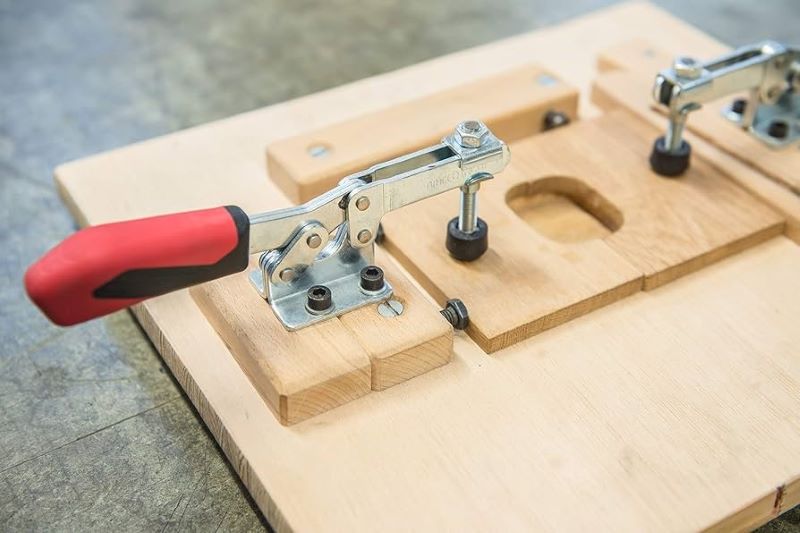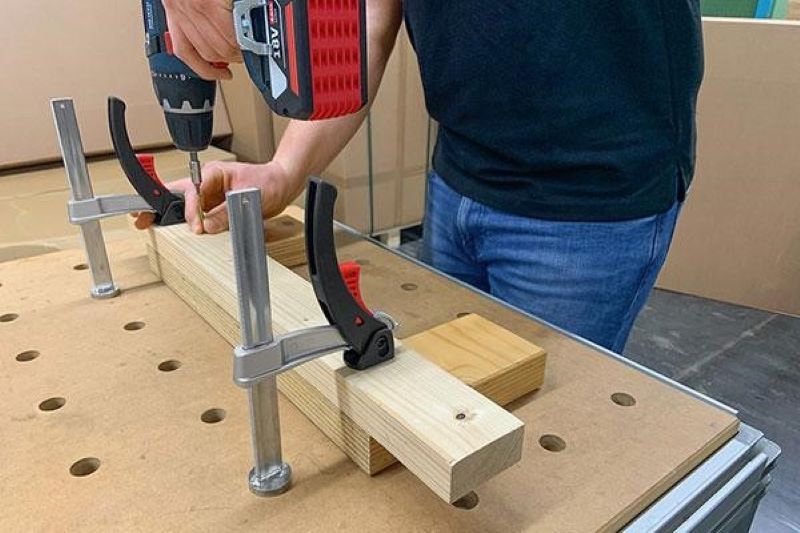Unlocking Precision: How to Use Toggle Clamps for Woodworking Success
Embarking on a woodworking journey towards unparalleled precision demands a keen understanding of the unsung heroes in the toolkit—toggle clamps. These unassuming devices play a pivotal role in securing workpieces with finesse and stability.
In this exploration, we delve into the fundamentals of toggle clamps, guide you through the art of selecting the perfect clamp, and unveil pro tips that elevate woodworking projects to new heights.
Understanding Toggle Clamps
Toggle clamps stand as indispensable tools within the woodworking domain, offering a reliable and efficient mechanism to secure workpieces during various project stages.
These tools come in diverse types and styles, each tailored for specific applications. To fully grasp their capabilities, it’s imperative to comprehend the fundamentals of toggle clamps and their operational dynamics.
Toggle clamps function on a straightforward yet ingenious principle: a lever system that tightens its grip on a workpiece.
The primary types encompass horizontal and vertical toggle clamps, with horizontal clamps suitable for applications requiring horizontal force, such as stabilizing a piece on a workbench.
Conversely, vertical clamps excel at securing workpieces against vertical surfaces, like a table saw fence.
If you are looking for the best horizontal and vertical toggle clamps for a successful woodworking project, browse SherwoodManufacturing.com and purchase quality products.
Selecting the Ideal Toggle Clamp for Your Woodwork Project
The meticulous choice of a toggle clamp for a woodworking project plays a pivotal role in ensuring both efficiency and safety.
This selection process involves evaluating factors like workpiece size and weight, required clamping force, and available workspace. Let’s delve into the specifics of choosing the perfect toggle clamp for your unique needs.
- Considerations for Size and Weight:
When doing this, opt for a compact toggle clamp with lower clamping force for smaller projects. Choose sturdier, heavy-duty toggle clamps for larger and heavier workpieces, ensuring a secure grip.
- Assessing Clamping Force Requirements:
Evaluate the force needed to hold your workpiece securely. Heavy-duty applications demand high-force toggle clamps, while delicate projects benefit from lighter clamps.
- Accounting for Workspace Constraints:
Factor in the available workshop space when selecting the toggle clamp style. Compact or vertical clamps suit confined spaces, while larger workshops accommodate horizontal clamps seamlessly.
For instance, consider the creation of a delicate wooden box. In this scenario, a smaller, vertical toggle clamp with moderate clamping force proves fitting, ensuring a secure hold without compromising the workpiece.
Ensuring Safe and Effective Toggle Clamp Utilization
Prioritizing safety when employing woodworking tools, including toggle clamps, is paramount. To guarantee secure and effective usage, adhere to these guidelines:
- Precise Installation:
Securely install toggle clamps onto a stable work surface. Ensure proper positioning of clamps to distribute force evenly across the workpiece.
- Routine Maintenance Practices:
Regularly inspect toggle clamps for signs of wear and tear. Use lubricants on moving components to sustain smooth operation and prevent rust.
- Adjustment and Calibration Procedures:
You should periodically calibrate toggle clamps to maintain precise clamping force. Make adjustments based on the specific requirements of each project.
Ensuring proper installation and regular maintenance assures a secure hold, mitigating the risk of accidents.
Professional Tips for Achieving Woodworking Precision with Toggle Clamps
Attaining precision in woodworking involves mastering the nuances of toggle clamp usage. Here are expert tips to elevate your woodworking endeavors:
- Strategic Placement Techniques:
Make sure to place toggle clamps strategically to evenly distribute pressure across the workpiece. You can also utilize multiple clamps for larger projects to ensure stability.
- Crafting Custom Jigs and Fixtures:
Develop custom jigs and fixtures to enhance toggle clamp versatility. Tailor setups to meet specific project requirements, ensuring unparalleled precision. By designing a custom jig incorporating multiple toggle clamps, simultaneous securement of various components streamlines the assembly process, guaranteeing consistent accuracy.
Conclusion
In conclusion, a thorough understanding of toggle clamps, meticulous selection, adherence to safety practices, and the incorporation of professional tips can significantly enhance woodworking endeavors.









